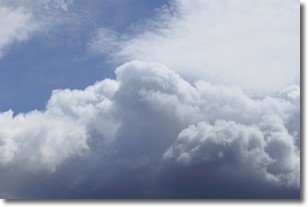Weather Alert in Maine
Air Quality Alert issued July 16 at 9:51AM EDT by NWS Caribou ME
AREAS AFFECTED: Northwest Aroostook; Northeast Aroostook; Northern Somerset; Northern Piscataquis; Northern Penobscot; Southeast Aroostook; Central Piscataquis; Central Penobscot; Southern Piscataquis; Northern Washington
DESCRIPTION: The Maine Department of Environmental Protection's Bureau of Air Quality has issued an Air Quality Alert for particle pollution until midnight EDT tonight. Particle pollution levels are expected to rise into the Unhealthy for Sensitive Groups range on Tuesday. Values are already in the USG range this morning. Smoke is currently expected to not move out of Maine until Thursday, though this denser portion of the plume should move out by Wednesday evening. In addition, particle pollution levels are expected to be moderate for the remainder of the state while ozone level are expected in the moderate range for the Maine coastal regions. The Maine Department of Environmental Protection recommends that individuals consider limiting strenuous outdoor physical activity to reduce the risk of adverse health effects. People who may be especially sensitive to the effects of elevated levels of pollutants include the very young, the elderly, those with pre-existing respiratory problems such as asthma, those with heart disease and anyone who is working hard outdoors. But if you experience symptoms such as shortness of breath, coughing, throat irritation or an uncomfortable sensation in your chest please consider limiting the intensity and duration of your outdoor activities. A toll free air quality hotline has been established so Maine residents can stay informed on the air quality situations. The toll free number is: 1-800-223-1196. Additionally the Maine Department of Environmental Protection has the air quality forecast available on the web at www.maine.gov/dep/air/aqforecast.
INSTRUCTION: N/A
Want more detail? Get the Complete 7 Day and Night Detailed Forecast!
Current U.S. National Radar--Current
The Current National Weather Radar is shown below with a UTC Time (subtract 5 hours from UTC to get Eastern Time).

National Weather Forecast--Current
The Current National Weather Forecast and National Weather Map are shown below.

National Weather Forecast for Tomorrow
Tomorrow National Weather Forecast and Tomorrow National Weather Map are show below.

North America Water Vapor (Moisture)
This map shows recent moisture content over North America. Bright and colored areas show high moisture (ie, clouds); brown indicates very little moisture present; black indicates no moisture.

Weather Topic: What are Nimbostratus Clouds?
Home - Education - Cloud Types - Nimbostratus Clouds
 Next Topic: Precipitation
Next Topic: Precipitation
A nimbostratus cloud is similar to a stratus cloud in its formless,
smooth appearance. However, a nimbostratus cloud is darker than a stratus cloud,
because it is thicker.
Unlike a stratus cloud, a nimbostratus cloud typically brings with it the threat
of moderate to heavy precipitation. In some cases, the precipitation may evaporate
before reaching the ground, a phenomenon known as virga.
Next Topic: Precipitation
Weather Topic: What is Rain?
Home - Education - Precipitation - Rain
 Next Topic: Shelf Clouds
Next Topic: Shelf Clouds
Precipitation in the form of water droplets is called rain.
Rain generally has a tendency to fall with less intensity over a greater period
of time, and when rainfall is more severe it is usually less sustained.
Rain is the most common form of precipitation and happens with greater frequency
depending on the season and regional influences. Cities have been shown to have
an observable effect on rainfall, due to an effect called the urban heat island.
Compared to upwind, monthly rainfall between twenty and forty miles downwind of
cities is 30% greater.
Next Topic: Shelf Clouds
Current conditions powered by WeatherAPI.com




